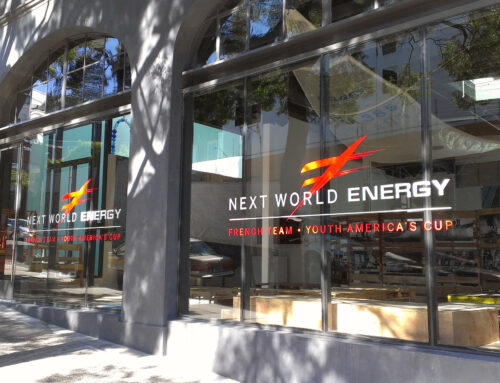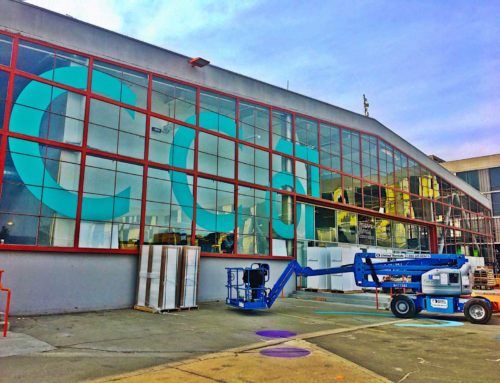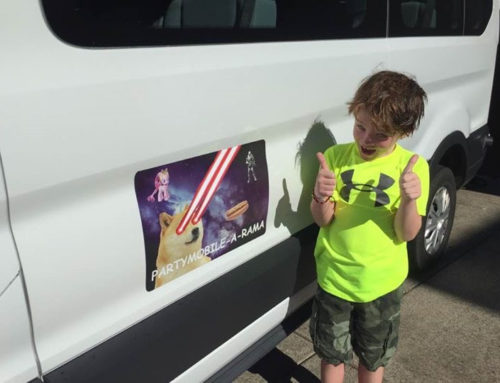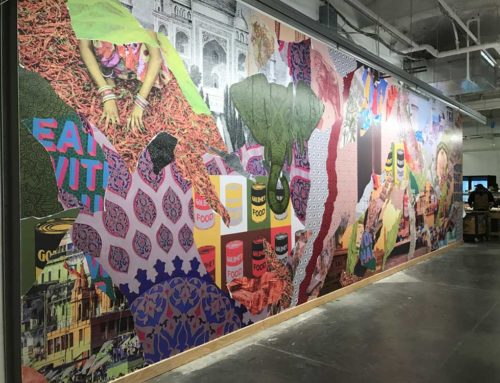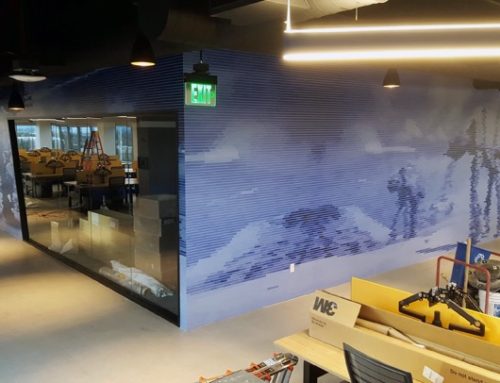When thinking about your sign for your glass door for example you will be asked by your sign guy what type of digital graphics or vinyl graphics you’d like to have on your door. The sign professional might ask “Do you want digital graphics or cut weed and tape?” Actually I know most people don’t know what cut weed and tape (CWT) is so I don’t even ask this. I will assume people don’t know sign lingo so I always ask if what they want on their window is just text with the glass being the background color? or do you want a full color decal put on the window? If the client want just text on the window with the glass being the background color then that tells me they want CWT. But if they have a full color image like a photograph to go on their window then I know we are talking about digital printing.
It all really comes down to taste. So I will leave it up to you on deciding what you think looks good. In the meantime here is the scoop on CWT and digital graphics.
Cut Weed and Tape:
This is basically Sign Shop 101 here. Cut Weed and Tape comes from what the sign shop must do to make the graphics. To get your individual letters to go on the wall without destroying the integrity of your logo or to save us from putting each letter up individually, we take a sheet of colored vinyl and put it into a machine called a plotter. This plotter takes the vector image you provided and cuts the individual shapes out of the sheet. When the plotter is done what is left is still a sheet of vinyl but with letters cut out…the background color which we don’t want is still there. The sign professional now has to “weed” out what is not needed to make the sign. After weeding the vinyl what is left are the individual letters left onto the wax backing paper. We use a large sheet of transfer tape to lay over the vinyl letters so as to make it easier to transfer the individual letters or shapes from the paper to the sign surface with messing with the spacing.
Types of signs where CWT can be used would be window signs, simple banners like “Grand Opening” or “Big Sale.” Real estate signs, construction signs, signs for vehicles, art galleries where they want to list the artwork or the artists that are in their show, and menu boards for small sandwich shops. CWT is very inexpensive and can be done quickly depending on the complexity.
The big limitation of CWT is that there is a limited amount of colors that can be used. There are still a lot of colors, but it is not every color under the sun. Also each color has to laid down seperately so it can be very labor intensive the more colors you have which will add to the cost. A growing issue of CWT tape is that many signs that used to be done in CWT are now being done with the digital printer so more and more suppliers are not carrying a large supply of vinyl in their warehouse. Something to consider in case you have a large project that uses a lot of one color.
One big advantage of CWT over digital graphics is that you can put CWT on glass and see through the window, where as with digital graphics you usually have a white or color background that is opaque. It is true that you can print on clear, but then the colors are not very saturated and the sign gets lost.
Digital Graphics:
It might seem that digital printers have taken over the world. It is true that digital printers are very versatile machines and it has changed the way signs are being made. It has changed the role of the graphic designer since they can now design very elaborate signs instead of the 1-4 color signs that we saw before digital printers. Digital printers vary in size but the process is the same. A large roll of material is loaded into the printer and the operator pushes “go” and the printer prints on the material. This sound simple, and it is after a professional is trained. But with printers and the millions of colors now you have to match colors to the clients specifications. So much of the work is in the calibration of the printer and in the finishing of the material once it is printed.
Printer professionals also have to worry about the artwork. The bigger you go with your logo on the side of the building the bigger the file needs to be. With vector images there is no change in quality since there are no pixils. But when you start with a photo like your senior picture from high school that you scanned at a low resolution it can only get so big before you lose quality in the photo. It is true that you can get away from using high resolution art when your sign is on the side of a billboard and 30′ up in the air. But the average sign is not on a billboard and most businesses can’t afford the costs of putting their sign on a billboard. The typical sign is going to be seen from a couple feet away and under 15′ from the ground. This means you can’t get away from having a high enough resolution in your art to accomplish this size. I usually tell clients that they should aim to have a resolution at about 150 dpi. We can print digital graphics lower than that, but it really does make a difference between a quality looking sign and a cheap looking sign.
Digital printing is fast and is good for large projects where many signs need to be made at many different sizes. Digital graphics can be used on most any type of sign. Vehicle graphics, magnetics, a-frames or sidewalk signs, menu boards, event signs like retractable banners, window coverings, barricade signs, avenue banners, large wall murals, bumper stickers, static clings, real estate signs, construction site signs, and more.
The technology is here now where we can use what is called a print-cut machine which will digital print you logo, then send it through the same machine to cut the contour of the logo so you get the best of both worlds. The majority of the time you don’t need this, but on the occasion where you want a complex logo on the glass but you want to have the background be the glass and not the white of the material then we would advise to get it print-cut. But that is a separate blog post all together.
If you would like a quote or free consultation for digital graphics or vinyl cut weed and tape please visit our contact page to call or email us your project details.



